First Impressions: Honor 20 Pro Review
First Impressions: Honor 20 Pro
Great phone, terrible timing
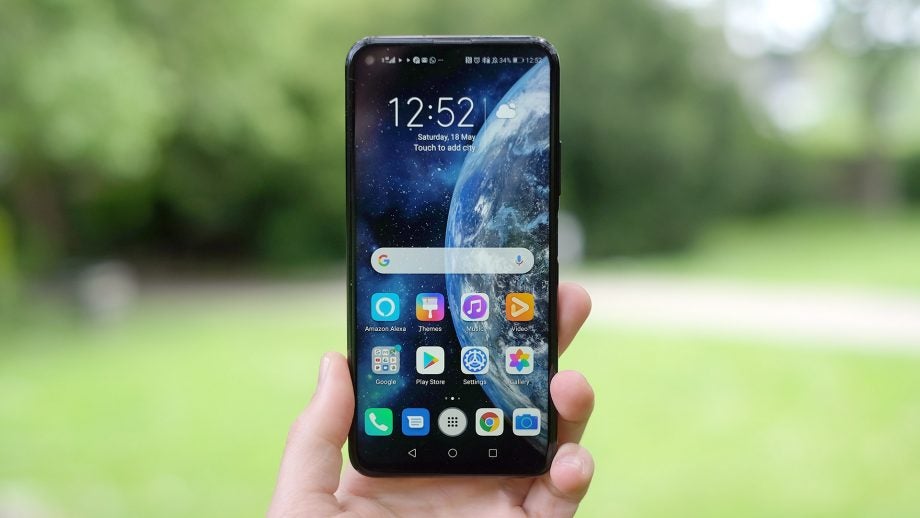
First Impressions
The Honor 20 Pro is an excellent phone that combines some high-end specs with a price less intimidating than the Huawei P30 Pro’s or Samsung Galaxy S10’s. If you want maxed-out gaming power, you’re better off with a OnePlus 7. And the Asus ZenFone 6 has both more power, a larger battery and more eye-catching motorised camera.
Key Specifications
- 6.2-inch display, FHD+
- Kirin 980
- Four rear cameras
- 4000 mAh battery
What is the Honor 20 Pro?
Honor is a bargain hunter’s phone brand. It makes phones at all prices bar those hovering around iPhone XS money, and in each cost category Honor tends to offer more tech per penny that almost anyone else.
The Honor 20 Pro is one of the priciest models the brand has made to date, much like the Honor View 20.
It has a less controversial finish, a new triple camera array and a smaller screen. The appeal is much the same though; you get a lot of phone for your money.
However, it’s currently hard to recommend thanks to the recent US legal action against Huawei, which also affects Honor. We can’t be sure the phone will be getting updates beyond August. That’s why this review doesn’t have a score. Honor has, however, said this phone will receive the Android Q update later in the year.
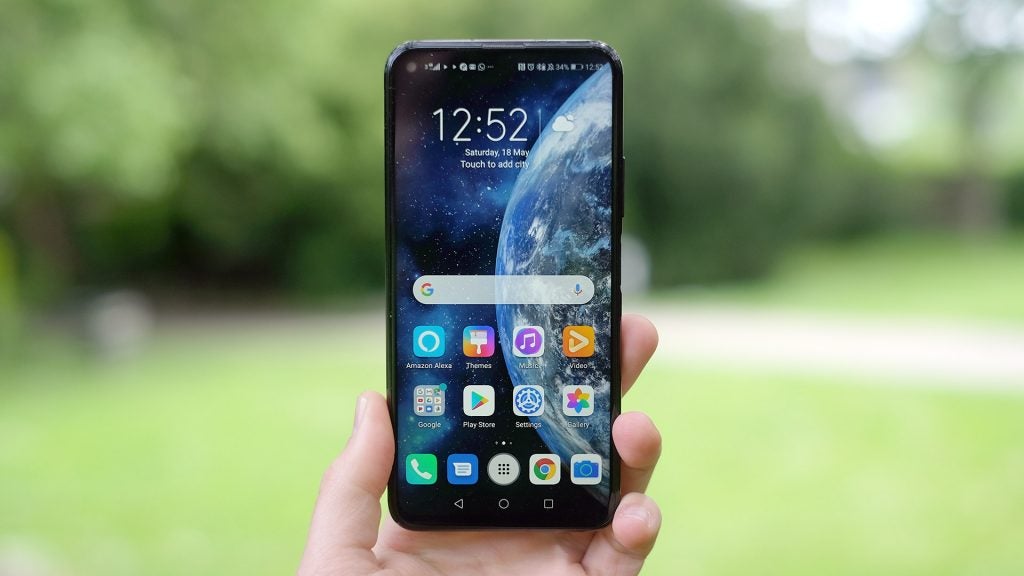
Honor 20 Pro — Design
The Honor 20 Pro has the kind of higher-end design that phones sport before they tip over into prices we would have found unthinkable a few years ago.
It’s metal and glass, but only the back is particularly curvy. The front glass is flat aside from its “2.5D” smoothed-off edges.
Such a look may be less immediately impressive than the Huawei P30 Pro’s, but there are benefits. A flat screen does not condense reflections into a small area like a curved one.
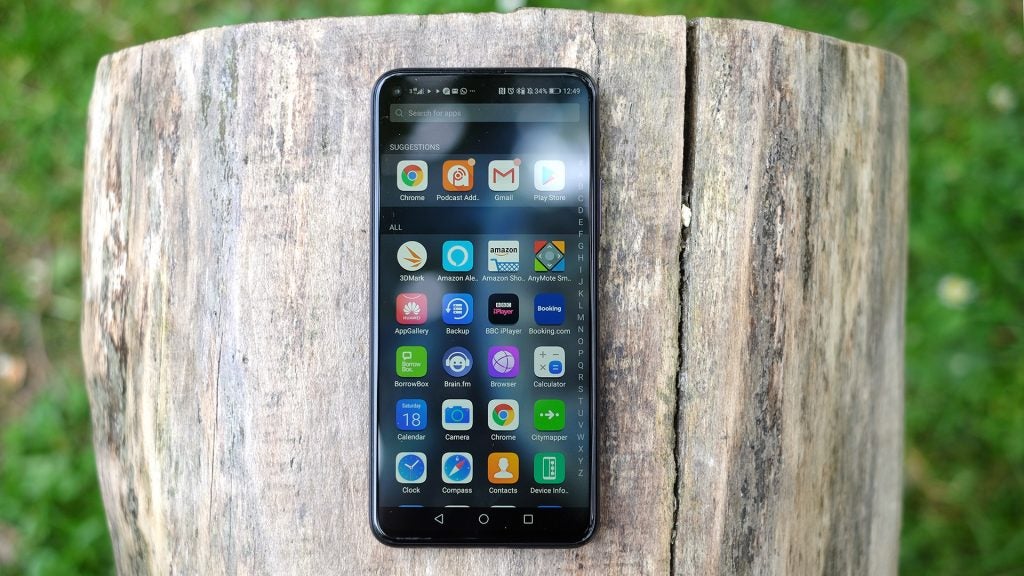
I switched to the Honor 20 Pro after using the OnePlus 7 Pro. The OnePlus looks and feels more expensive, but many of you may get on with the Honor better. It’s a relatively pocket and hand-friendly size.
Honor has also inadvertently toned down the finish this time. The Honor 20 Pro has a shiny finish, but a layer below the rear glass scatters light so you don’t see reflections of your face as clearly.
It looks great. And there are no chevrons, which I initially found hard to stomach in the otherwise excellent Honor View 20, this phone’s predecessor.
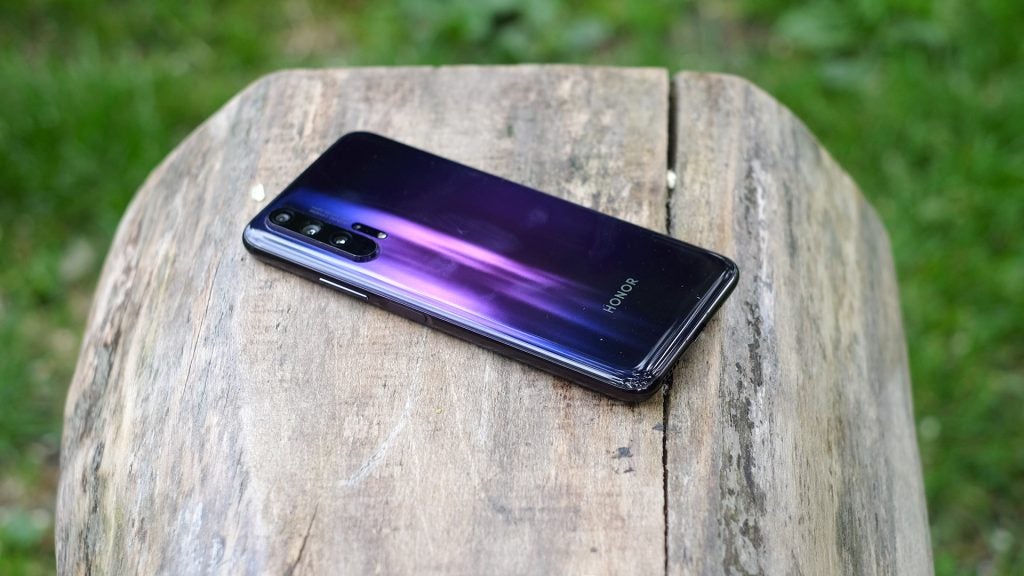
I also find it hard not to be impressed by the sheer amount of storage in the Honor 20 Pro. It has 256GB, the same as the SSD in the MacBook Pro I used daily.
Go wild, download as much Netlix and Spotify content as you like, or try out that huge data-hungry game you think may well be dreadful. There’s no burden aside from that placed on your data or home internet allowance, as it’s hard to use up all 256GB.
There’s what looks like a classic odd Honor hardware addition too, an IR blaster. This lets you control your TV with the phone, although there’s no preinstalled app and the popular AnyMote app reports the Honor 20 Pro does not have an IR blaster, suggesting it may be disabled. It could also theoretically be an ambient light sensor, but blocking it has no effect on display brightness.
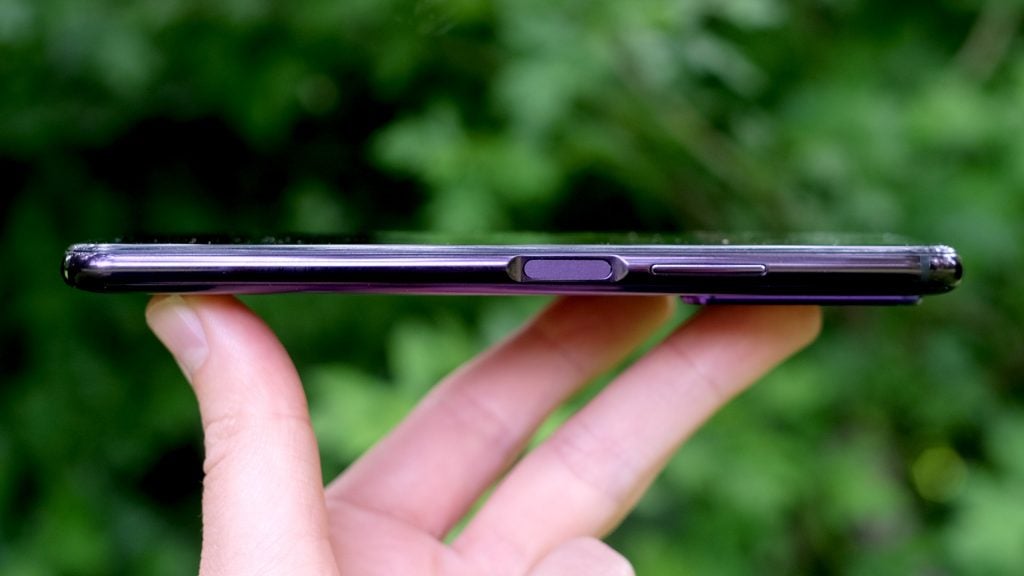
And the finger scanner? Most Honor phones have scanners on their rears. The Honor 20 Pro has one on its side, a style Sony made (slightly) popular.
I prefer the rear style, but this is a very good take on a side-loaded scanner. It’s well-indented so you can feel where your thumb needs to go without having to look. The pad doubles as a power button. And you don’t need to press it to take the Honor 20 Pro out of standby. Just rest your thumb on the pad and you’re usually sent to the home screen in a fraction of a second.
However, there are no fingerprint scanner gestures. You can’t bring down the the notifications bar with a pad swipe, as you can in some phones.
The Honor 20 Pro does not have a headphone jack either, now the sad standard for high-end phones. You do get an adapter in the box, though.
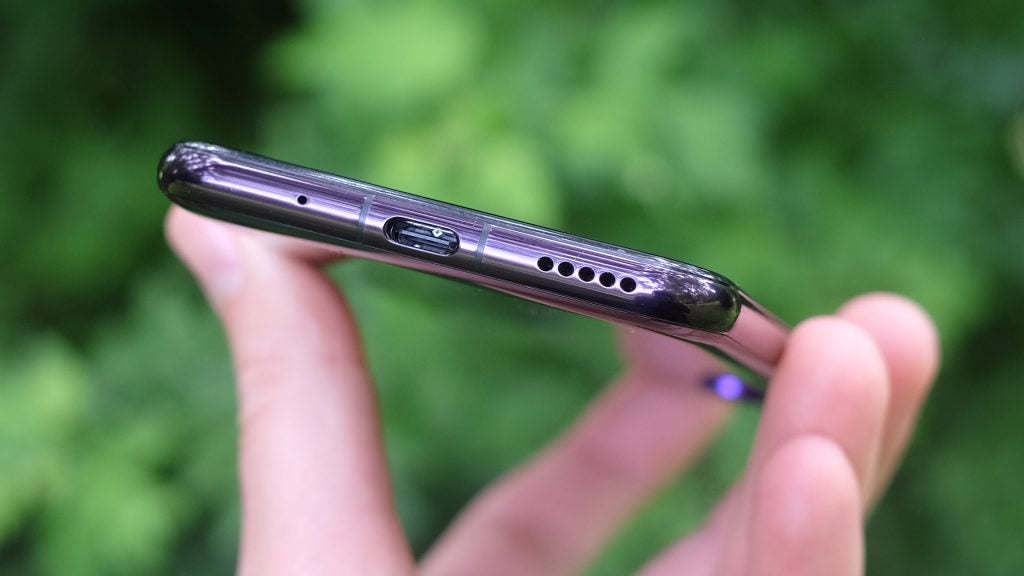
Honor 20 Pro — Screen
The Honor View 20 was the first phone I used with a punch hole screen. It seemed exotic back then and the Honor 20 Pro has more-or-less the same take on the concept.
A little black ring at the top left of the screen accommodates the selfie camera. Annoyed by that blob in display? Your other options at the price are phones with a notch or a motorised front camera.
A punch hole seems more reliable than a motorised camera, and cheaper, but it’s no friend to ultra-wide video. It takes a chunk out of cinema-aspect video made to fill the screen. However, most online video is still optimised for 16:9 widescreen. Unless you crop into the footage, 16:9 video won’t touch the punch hole anyway.
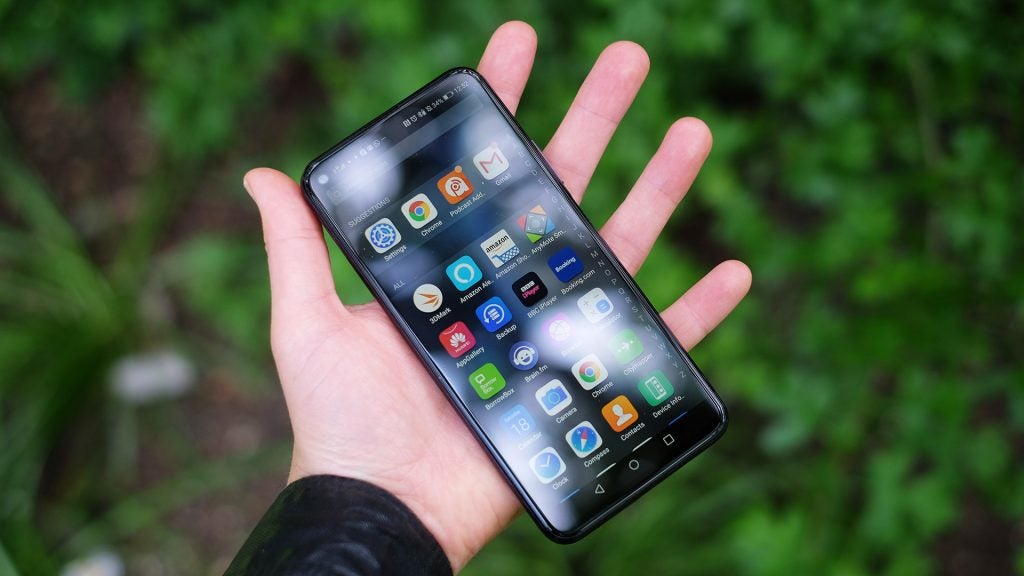
The display quality is excellent. It’s a Full HD-grade screen, but it makes me wonder why a display this size really needs any higher pixel density.
It looks sharp until you look closer than most ever would, the display is fairly bright and reacts quickly to changes in ambient light. The Honor 20 Pro is far too saturated for my tastes when first switched on. This is only because it defaults to its “vivid” colour mode. You can switch to the “normal” mode in settings, for a more balanced character.
This is still more saturated than classic industry standard sRGB. But that looks anaemic to everyone but miserable old puritans these days.
Honor 20 Pro — Software
Honor calls its Android software Magic UI. Right now, in May 2019, it’s almost identical to the EMUI of Huawei phones.
In 12 months’ time that may have changed. But for now this software is very similar to that of the Huawei P30 Pro.
The apps menu looks perhaps a little stilted next to the Google Pixel 3a XL’s. You may want to move away from the default theme, as it’s not one of Honor’s best. It looks a touch garish. And years on I’m still not a fan of this software’s approach to the app drawer, being that there isn’t one unless you dig into settings to add the apps screen.
I’d suggest doing so, but friends who have ended up with Huawei and Honor phones have disagreed.
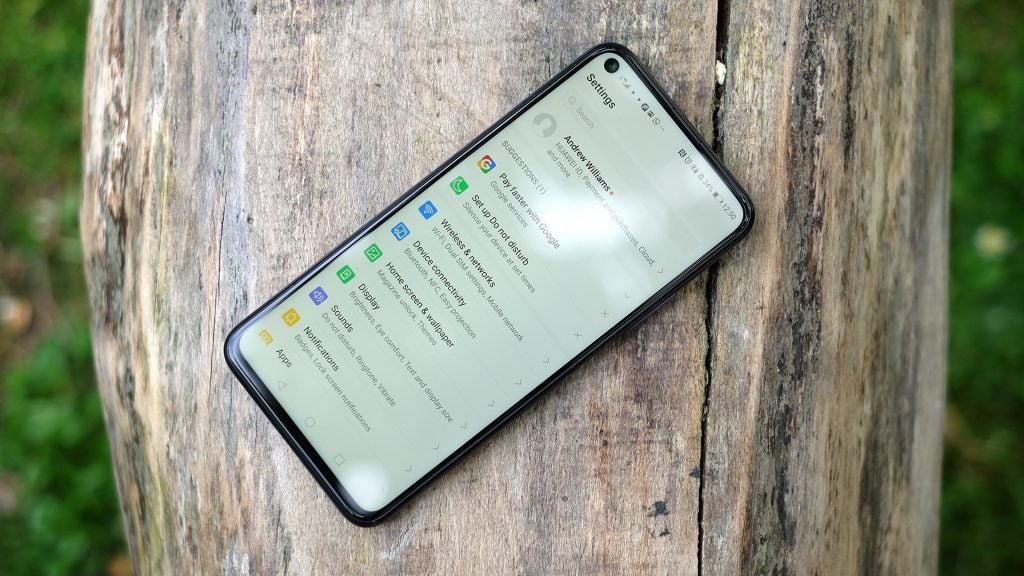
Personal inclinations have a particularly strong influence on how you’ll perceive an interface. But the Honor 20 Pro handles the less subjective basics well.
Magic UI is responsive, there’s no obvious lag. You get a “flagship” phone experience with the Honor, and you have a right to expect it. This phone isn’s exactly cheap.
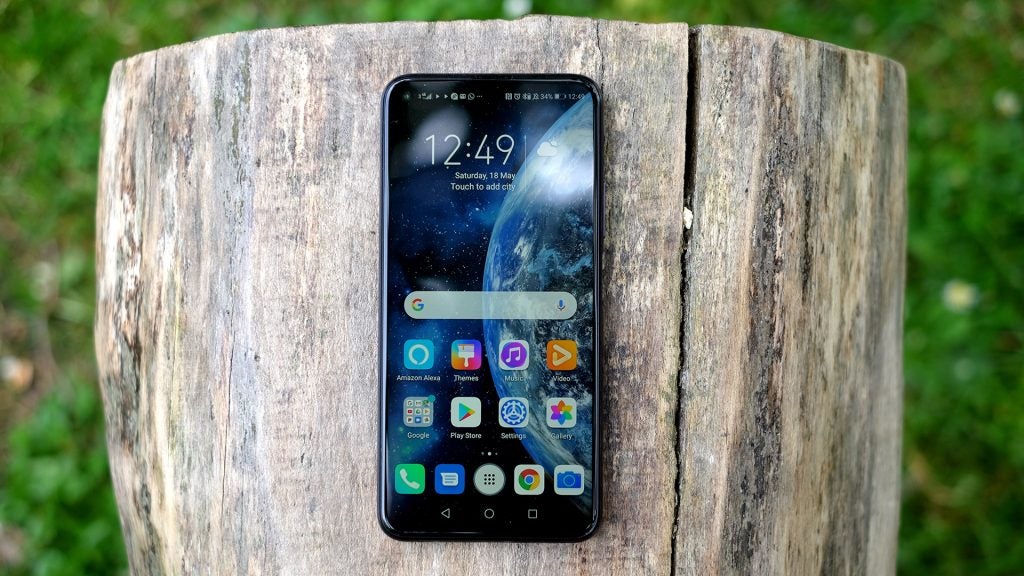
Its actual hardware is solid for the price. It beats the Pixel 3a XL, but not the OnePlus 7 .
You get a Kirin 980 CPU, the same used in most expensive Huawei phones at the time of the the Honor 20 Pro’s launch. It has four Cortex-A76 cores and four A55s. The more popular Qualcomm chipsets now use “Kryo” cores, but the faster of these are actually based on the Cortex-A76 seen here.
Honor seems to have blocked Geekbench 4 installs on this Honor 20 Pro review unit. This is likely an attempt to avoid comparisons with the new crop of mid-price phones that use the Snapdragon 855. Judging by the many other Kirin 980 phones I’ve used in the past, an 855 CPU phone like the OnePlus 7 will achieve a score around 10-15% higher.
As the Honor 20 Pro is one of the slightly more affordable phones with a high-end CPU, this disparity does not matter hugely. There’s another difference to note too.
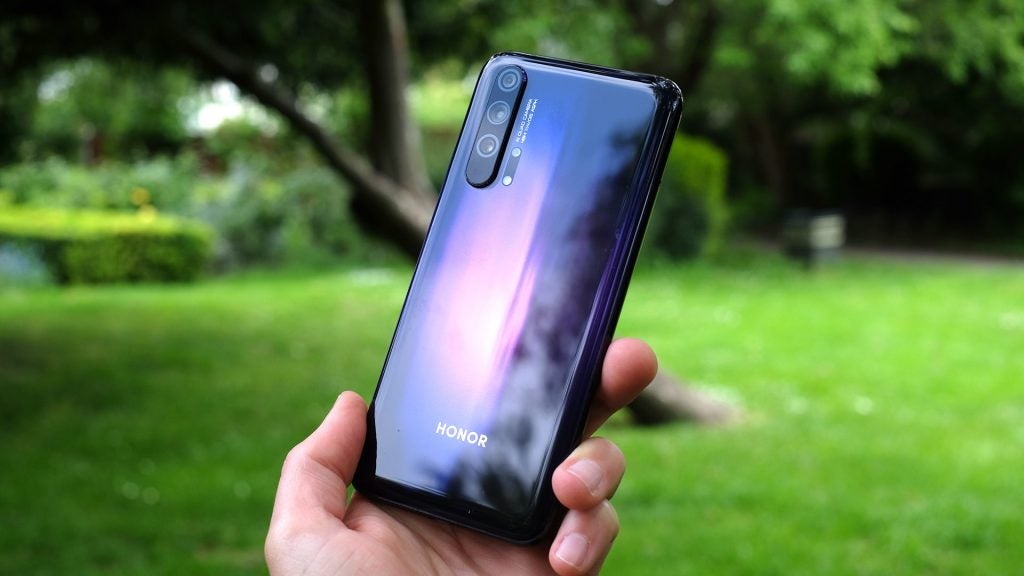
The Honor 20 Pro has a much weaker CPU than the latest Qualcomm Snapdragon 855 , and here the gulf is huge. A 10-core Mali-G76 graphics chipset is the Kirin 980 GPU. The OnePlus 7 has an Adreno 640, which is almost 40% more powerful.
The Kirin 980’s GPU was already less powerful than the last generation Qualcomm Snapdragon 845. If you’re into console emulation, or want future-proofing for games two years down the line, the OnePlus 7 and Asus ZenFone 6 beat the Honor 20 Pro.
However, right now it’s actually tricky to find conventional Android games that really show up this difference in performance. Ark: Survival Evolved is one of the best examples, and it struggles a little when maxed-out here.
Honor 20 Pro — Camera
Honor and Huawei like to get tech early, and really pile it on when they get a chance. The Honor 20 is packed with rear cameras. There are four of them.
However, think of this as a triple camera array with a skin tag that happens to take photos. The fourth one is a dedicated macro shooter. I love this concept, as a lot of the best phone cameras don’t actually let you get that close to your subject.
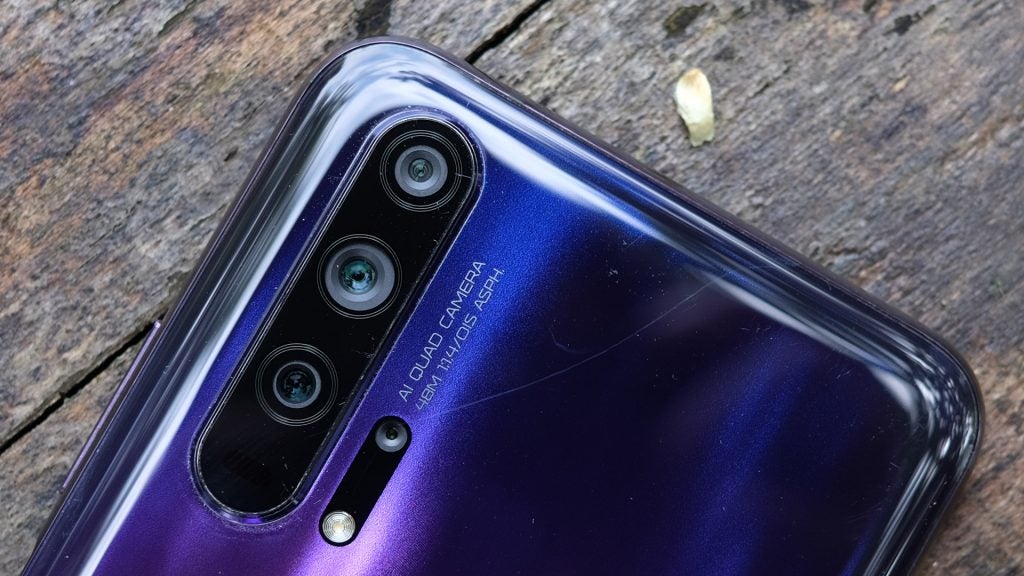
This one isn’t much use, though. It has a fixed focus lens, with a focus distance of around 4cm. But the only way to tell if the subject is in the right spot is through the preview image, which is tricky at the best of times and a gamble on a bright day when the display has to compete with a lot of light.
The Honor 20 Pro macro camera needs focus peaking, where the in-focus parts of an image are outlined in white (or another colour) to show they are crisp. And even if you do nail the focus, details in the image never look sharp as the macro has a low-res 2-megapixel sensor.
I find you somtimes get better results using the normal camera and judicious cropping. Hopefully Honor and Huawei will explore this macro concept in future phones though, as it’s an interesting one.
The Honor 20 Pro’s other cameras are a holiday snapper’s delight. It has a 3x 8-megapixel zoom, 48-megapixel main camera and a 16-megapixel ultra-wide. It’s just what I have hoped for: a cheaper take on the Huawei P30 Pro camera.
Everything’s a little cut-down, of course. The zoom is 3x rather than 5x, the wide takes slightly worse-looking images and has a fixed focus. The P30 Pro can actually take macro-style shots with its wide too.
Most important of the lot, the Honor 20 Pro has the 48-megapixel Sony IMX586 sensor, a very high-res but presumably fairly low cost chip, considering the £279 Motorola One Vision has it too. This sensor sounds better than it actually is, but thanks to the Huawei/Honor image processing and software flexibility, it’s the best application I’ve seen of it to date.
Honor handles its 48-megapixel camera better than the OnePlus 7 Pro, and better than the Asus ZenFone 6.
For example: this sensor is designed to capture 12-megapixel pictures, but phones tend to let you take 48-megapixel images too. This is usually a bit pointless. What extra detail there is often seems the result of processing. The Honor 20 Pro does a much better job. Sure, its 48MP AI Ultra Clarity mode doesn’t match the P30 Pro’s full-res mode, but it does make car number plates that are a small mush of pixels at 12MP readable at 48MP.
Unlike the OnePlus 7 Pro, full res images get proper dynamic range enhancement too.
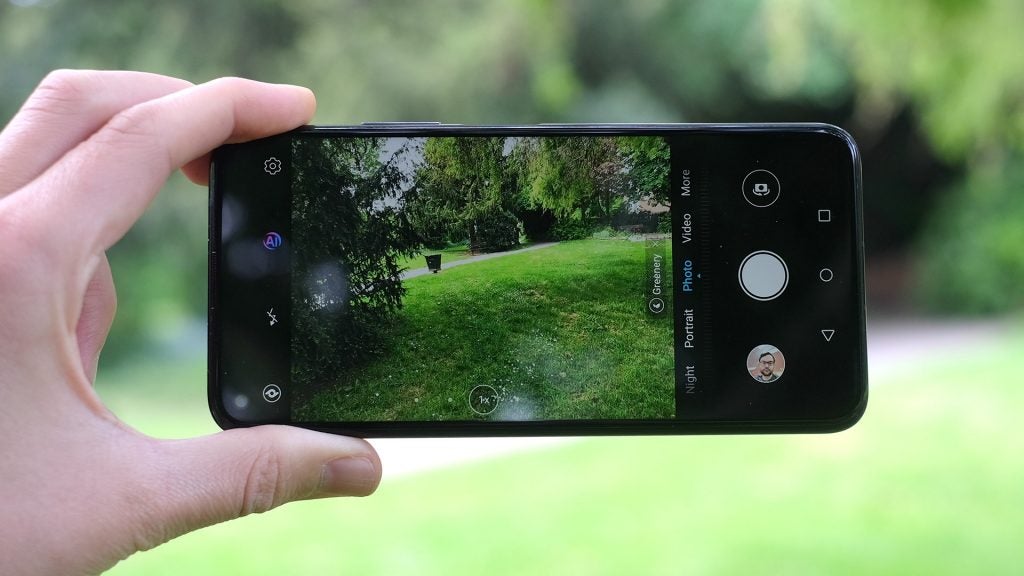
To get a feel for the Honor 20 Pro’s normal image quality, I went on a shoot with it and the Pixel 3A XL. It caused waves recently as it has the same sensor as the pricey Pixel 3 XL.
These two phones’ styles are quite different. The Honor images look more processed. They are smoother down at pixel level, but there’s a lot of like about the extra punch and colour clarity the final JPEGs have. Purists might prefer the Pixel, but in fine-grain natural textures the Honor can actually beat the Pixel at times, retaining more of a sense of the sea of stalks in a field of long grass.
Use the 48MP AI Ultra Clarity and the processed look recedes a bit too, as there’s no more downscaling involved.
You can also use the Honor 20 Pro’s great night mode with all three of the primary cameras. Not used an Honor/Huawei night mode before? It takes 5-7 seconds to capture an image, but you can do so handheld as it combines a bunch of quick exposures rather than using a single long one.
Auto mode night shooting is fairly good, but the Night mode improves dynamic range and reduces noise, with a slight reduction in sharpness in most cases. It’s a fair trade-off, and one you see in the Huawei P30 Pro too.
The Honor 20 Pro is also the first phone I’ve used with an f/1.4 lens. This is a dramatically wide aperture that lets in more light than just about any other phone, and that aperture is all the more impressive given it sits in front of a fairly large 1/2-inch sensor.
However, I can see why other phone-makers have not used this lens to date. At night it reacts rather wildly to strong light sources (street lamps, essentially), causing light smears and arcs across the image. I tried wiping down the lens covering on several occasions, as a greasy lens can cause such effects, but the unwanted light bloom was still there.
 The sky is filled with UFOs: unexpected flare objects
The sky is filled with UFOs: unexpected flare objects
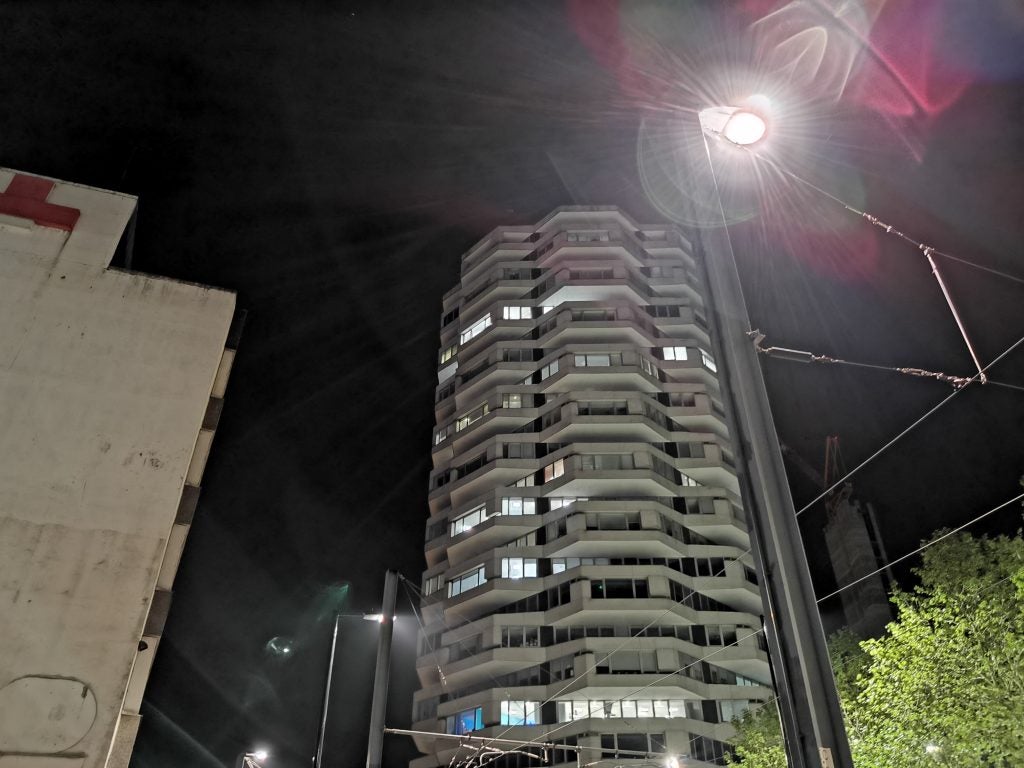
It suggests the optical quality of the f/1.4 lens isn’t the best. But the effect can actually look rather neat in some situations, and the Honor 20 Pro’s night mode is able to render slightly better fine detail using its Night mode than either the OnePlus 7 Pro or Asus ZenFone 6.
Some other common Huawei/Honor issues remain too. Images without a skyline to act as a brightness reference can often benefit from an exposure reduction of up to 1.5 to 2ev. That’s a lot: the Honor 20 Pro is a bit obsessed with bright images, but trees and leaves look better with the correct exposure. You can tweak this with the exposure slider the appears when you choose the focus point.
Here are some sample images taken with the Honor 20 Pro:

Zoom lenses have a neat effect other than the zoomed view: a neat flattened perspective you can’t get by moving closer
 The subject isolation of the Aperture mode set to f/0.95 is off the charts
The subject isolation of the Aperture mode set to f/0.95 is off the charts

 5x zoom shots don’t bear cropping, but they do help you keep away from bees
5x zoom shots don’t bear cropping, but they do help you keep away from bees
 Another example of the zoom’s cool-looking flattened perspective
Another example of the zoom’s cool-looking flattened perspective

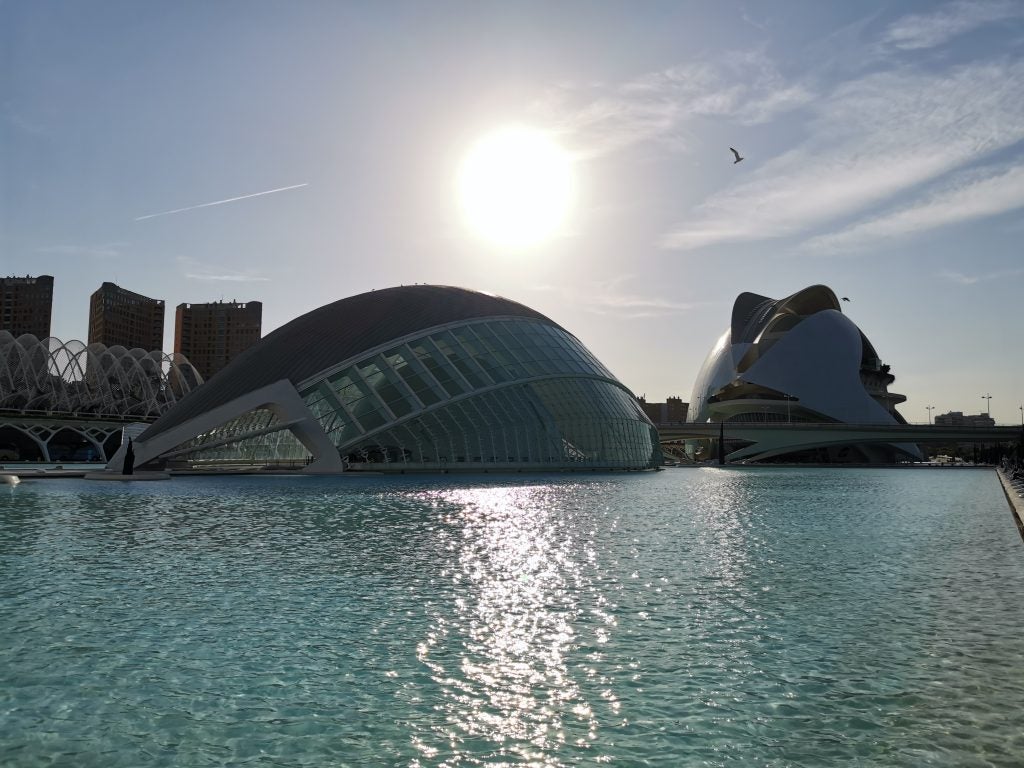 Dynamic range boosting is excellent, like other top Honor and Huawei phones
Dynamic range boosting is excellent, like other top Honor and Huawei phones
 The ultra-wide gives buildings an imposing “looming” character
The ultra-wide gives buildings an imposing “looming” character
One other complaint; the camera housing sticks out to an almost alarming extent. You’ll graze the glass cover if you are not careful. And dust gathers around its border within hours even if you are.
There are a couple of video compromises too. The Honor 20 Pro shoots video at 4K resolution, but only at 30fps, not 60fps. However, this 30fps does use software image stabilisation. I’d argue that 60fps 4K modes aren’t particularly useful unless they have decent stabilisation.
The Honor 20 Pro also lets you skip between 1x, 0.6x, 3x and 5x views mid-capture. It’s on-the-fly editing, a pretty neat extra.
Its front camera has the same 32-megapixel sensor we saw in the View 20. This is one of the better selfie cameras at any price, as it appears to use invisible pixel binning to make your snaps clear no matter the light conditions. Why “invisible”? The final image files are still the same resolution, but the quality of the low-light selfies suggest sensor pixels team up behind the scenes to increase the sensor’s sensitivity.
Honor 20 Pro — Battery Life
The Honor 20 Pro has a 4000mAh battery. You get quick charging, but no wireless charging, and stamina is at the same excellent level I’ve come to expect from top Honor and Huawei phones.
I spent one day of testing in Valencia, and then travelling back to London. That was a 6:45am start (in UK time), a 12am finish, and a lot of Google Maps navigation, podcast streaming, TripAdvisor-ing and photo-snapping in-between. It still had around 20% charge left by the end.
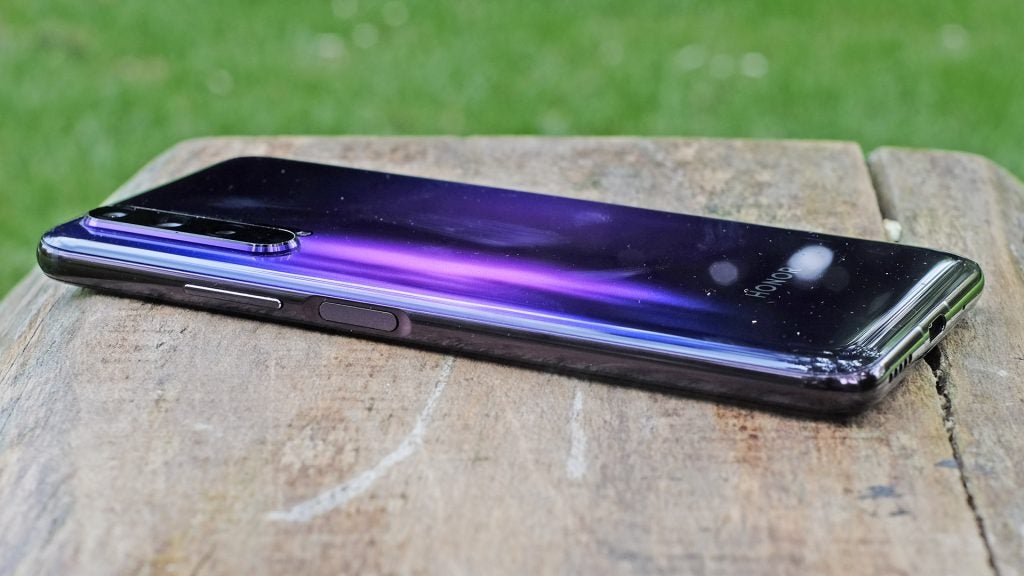
On a lighter day, a breezy Sunday when I just streamed a couple of podcasts and used the phone to Citymapper-navigate to meet a friend in London, it finished the night with a whopping 58% charge left. At 4pm the next day it was still at 20%.
You can rely on the Honor 20 Pro to last a full day of fairly heavy use, and I have noticed no overly aggressive power management techniques. It doesn’t close down audio apps as you listen, which has happened in previous Honor/Huawei phones.
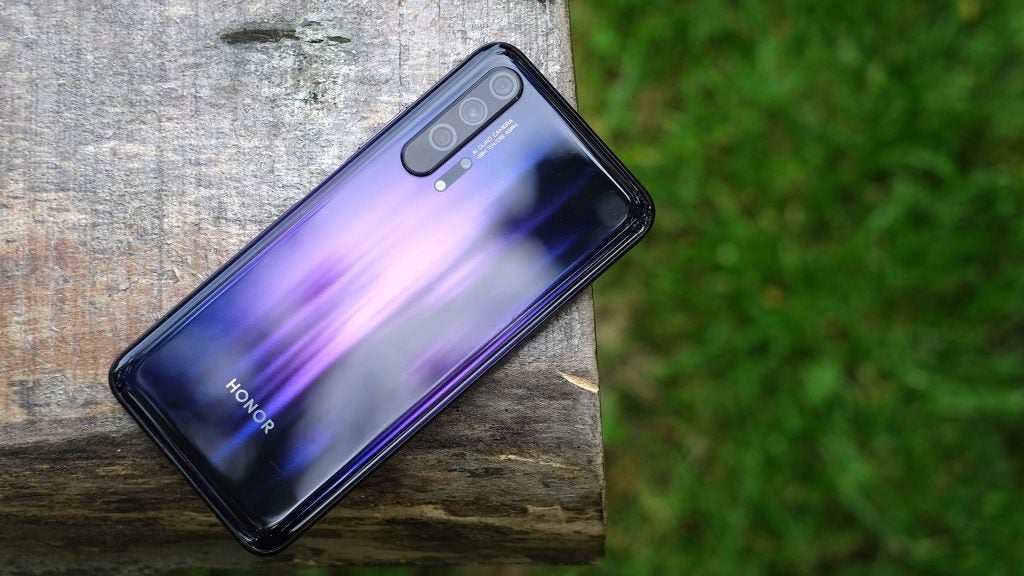
Should I buy the Honor 20 Pro?
The Honor 20 Pro is an excellent phone that combines some high-end specs with a price less intimidating than the Huawei P30 Pro’s or Samsung Galaxy S10’s.
If you want maxed-out gaming power, you’re better off with a OnePlus 7. And the Asus ZenFone 6 has both more power, a larger battery and more eye-catching motorised camera.
However, we’d rather take the Honor 20 Pro on holiday as a camera-replacer. Its zoom and wide cameras are good, and Honor squeezes more out of the 48-megapixel main camera than either OnePlus or Asus.
Rather useless macro camera aside, the Honor 20 Pro gets it “just right”. It has the right hardware, isn’t worryingly large, lands at a fair price and looks more tasteful than some Honors.
However, at the phone’s launch it’s hard to recommend any Honor phones, thanks to the potentially catastrophic effect of Huawei’s Android blacklisting.
Verdict
A great phone with terribly unfortunate timing
How we test phones
We test every mobile phone we review thoroughly. We use industry standard tests to compare features properly and we use the phone as our main device over the review period. We’ll always tell you what we find and we never, ever, accept money to review a product.


